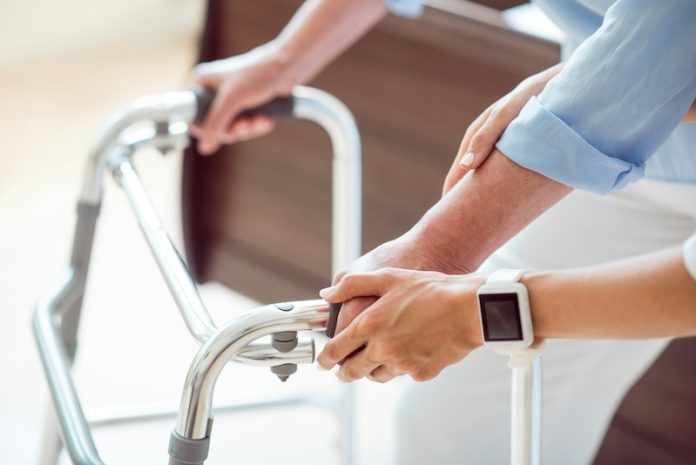
Parkinson’s disease is a progressive neurological disorder that affects movement. It often causes tremors, stiffness, and difficulty with balance and coordination. As the disease progresses, these symptoms can make it hard for individuals to move around safely and independently.
Mobility aids can be incredibly helpful in maintaining activity levels and preventing falls. Here, we review some of the best mobility aids for people with Parkinson’s, based on research and practical experience.
One of the most common and useful mobility aids for Parkinson’s patients is the walker. Walkers provide stability and support, helping to prevent falls. There are different types of walkers, including standard walkers, which must be lifted to move, and wheeled walkers, which have wheels for easier movement.
A study published in the Journal of Geriatric Physical Therapy found that wheeled walkers can improve walking speed and stability in people with Parkinson’s. Walkers with a built-in seat are also beneficial, allowing individuals to rest when needed.
Canes are another popular mobility aid. They are less bulky than walkers and can provide significant support for people with mild to moderate balance issues. Canes come in various designs, including single-point canes and quad canes, which have a broader base for extra stability.
According to research in the Archives of Physical Medicine and Rehabilitation, quad canes can offer better support and balance for people with Parkinson’s compared to single-point canes.
For those with more severe mobility issues, rollators are an excellent option. Rollators are similar to walkers but are equipped with larger wheels, a seat, and often a basket for carrying items. They allow for greater mobility and independence.
A study in the Journal of Rehabilitation Research and Development found that rollators significantly improve walking speed, balance, and overall mobility in people with Parkinson’s. Rollators are particularly helpful for outdoor use and longer distances due to their sturdy construction and added features.
Wheelchairs may be necessary for individuals with advanced Parkinson’s who have significant difficulty walking. Manual wheelchairs are suitable for those who can still use their upper body to propel themselves. For individuals with limited upper body strength, electric wheelchairs can provide greater independence.
A study published in Disability and Rehabilitation: Assistive Technology highlighted the importance of personalized wheelchair fittings to ensure comfort and optimal use. Wheelchairs can greatly enhance mobility and allow individuals to participate in activities they might otherwise miss.
Scooters are another option for outdoor mobility. They are particularly useful for people who can walk short distances but need assistance with longer journeys. Scooters are easy to operate and can be used in various settings, such as shopping malls or parks.
Research in the Journal of Disability and Rehabilitation found that scooters improve the quality of life and independence for individuals with mobility impairments, including those with Parkinson’s.
In addition to these aids, mobility assistance devices such as lift chairs and bed rails can also be beneficial. Lift chairs help individuals move from a sitting to a standing position, which can be particularly challenging for people with Parkinson’s due to muscle stiffness and balance issues.
Bed rails provide support and prevent falls when getting in and out of bed. According to a study in the Journal of Clinical Nursing, these aids can enhance safety and confidence in daily activities.
Treadmills with harness systems are a specialized type of mobility aid used in physical therapy. They provide support and prevent falls while allowing individuals to practice walking.
A study in the Archives of Physical Medicine and Rehabilitation found that treadmill training with a harness system can improve walking speed and reduce the risk of falls in people with Parkinson’s.
When choosing a mobility aid, it is essential to consider the individual’s specific needs, preferences, and the progression of their Parkinson’s disease. Consulting with healthcare professionals, such as physical therapists or occupational therapists, can help determine the most suitable aid and ensure proper use.
In conclusion, there are various mobility aids available to help people with Parkinson’s maintain their independence and safety. Walkers, canes, rollators, wheelchairs, scooters, and mobility assistance devices can all play a significant role in improving mobility and quality of life.
With the right aid and support, individuals with Parkinson’s can stay active and engaged in their daily lives.
If you care about Parkinson’s disease, please read studies that Vitamin B may slow down cognitive decline, and Mediterranean diet could help lower risk of Parkinson’s.
For more health information, please see recent studies about how wheat gluten might be influencing our brain health, and Olive oil: a daily dose for better brain health..
Copyright © 2024 Knowridge Science Report. All rights reserved.



